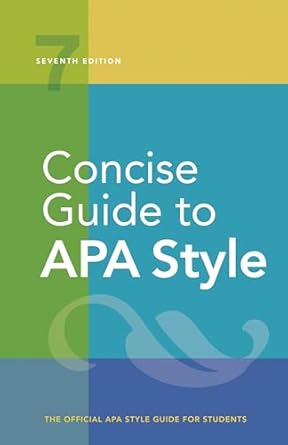[toc]
cite primary vs secondary sources a quick guide
Concise Guide to APA Style: 7th Edition (OFFICIAL)
Page 203 Review
Understanding Primary and Secondary Sources: A Guide to Scholarly Citation
In the realm of academic research, the proper citation of sources is paramount.
This ebook excerpt sheds light on the crucial distinction between primary and secondary sources and provides guidance on how to cite them effectively.
The core principle, as the text emphasizes, is to prioritize primary sources whenever possible.
The Importance of Primary Sources
The excerpt begins by defining primary and secondary sources: “In scholarly work, a primary source reports original content, and a secondary source refers to content first reported in another source.” The preference for primary sources stems from their direct connection to the original research or idea.
Citing a primary source demonstrates that you have engaged directly with the foundational work upon which your own research is built.
When Secondary Sources Are Acceptable
While primary sources are ideal, the excerpt acknowledges situations where citing secondary sources is necessary.
These include instances where “the original work is out of print, unavailable, or available only in a language that you do not understand.” However, even in these cases, the text urges caution and encourages researchers to make every effort to locate and engage with the primary source.
The Golden Rule: Find, Read, and Cite Directly
The excerpt lays down a clear rule for good scholarly practice: “If possible, as a matter of good scholarly practice, find the primary source, read it, and cite it directly rather than citing a secondary source.” This directive underscores the importance of critical engagement with the source material.
Simply relying on another’s interpretation, as presented in a secondary source, can lead to misunderstandings or misrepresentations of the original work.
Specific Examples: Avoiding Citation Pitfalls
The excerpt provides a concrete example to illustrate this point: “For example, rather than citing an instructor’s lecture or a textbook or encyclopedia that in turn cites original research, find, read, and cite the original research directly (unless an instructor has directed you to do otherwise).” This scenario highlights the danger of relying on tertiary sources that summarize or synthesize information from primary research.
By tracing the information back to its origin, researchers can ensure accuracy and avoid perpetuating errors.
Properly Citing Secondary Sources
When citing a secondary source is unavoidable, the excerpt outlines the proper citation format.
The text clearly states that, “When citing a secondary source, provide a reference list entry for the secondary source that you used.
In the text, identify the pri- mary source and then write “as cited in” the secondary source that you used.
If the year of publication of the primary source is known, also include it in the text.” This method allows readers to understand the relationship between the primary and secondary sources and to trace the information back to its origin if desired.
Citation Examples: A Practical Guide
The excerpt gives an example of how to cite secondary sources: “For example, if you read a work by Lyon et al. (2014) in which Rabbitt (1982) was cited, and you were unable to read Rabbitt’s work yourself, cite Rabbitt’s work as the original source, followed by Lyon et al’s work as the secondary source.
Only Lyon et al’s work appears in the reference list. (Rabbitt, 1982, as cited in Lyon et al., 2014)”.
And the next example shows how to cite the secondary source when the year of the primary source is unknown. “Allport’s diary (as cited in Nicholson, 2003)”
Citing Interviews as Sources
The excerpt further delves into the specifics of citing interviews, categorizing them into published interviews, personal interviews, and research participant interviews.
The excerpt states: “An interview is a dialogue or an exchange of information between people.
Interviews used as sources can be classified into three cate- gories: published interviews, personal interviews, and research par- ticipant interviews.”
Published Interviews: Following Established Formats
For published interviews, the guidance is straightforward: “To cite a published interview, follow the format for the reference type (e.g., magazine article, podcast episode, radio broadcast; see Chapter 10, Examples 15, 83, and 84, respectively).
The person being interviewed will not necessarily appear in the author element of the reference; in this”.
This underscores the importance of adhering to established citation styles for different media formats.
It’s essential to correctly identify the type of publication (e.g., a magazine article, a podcast episode) and follow the relevant formatting guidelines.
Conclusion
This ebook excerpt provides a concise yet comprehensive overview of the principles and practices of citing primary and secondary sources.
By following the guidelines outlined in this text, researchers can ensure the accuracy and integrity of their work, contributing to the advancement of knowledge in their respective fields.
Buy full ebook for only $18: https://www.lulu.com/shop/american-psychological-association/concise-guide-to-apa-style-7th-edition-official/ebook/product-rmzpq54.html?page=1&pageSize=4
Cite Primary Vs Secondary Sources A Quick Guide
Read more: Personality Functioning: Scales & Statistics Analysis</
Read more: Citing Visuals: Art, Clip Art, and Infographics</


Leave a Reply